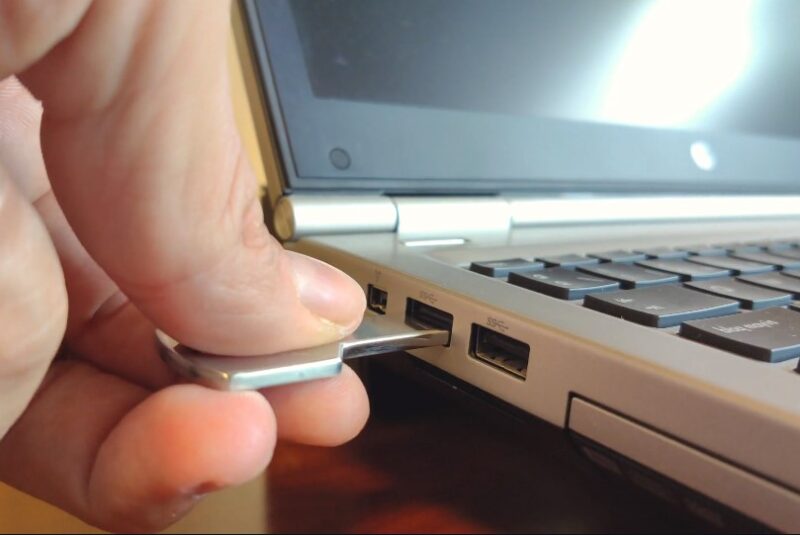Reformatting your Asus laptop can seem like a daunting task, especially if you’re not particularly tech-savvy. However, it’s a necessary skill to have, especially when your laptop starts slowing down, experiencing issues, or when you want to sell it.
I have an Asus model and although I used to hate this process, it has helped improve my laptop’s performance, remove viruses, and gave me a fresh start. Today we will walk you through the process step-by-step, making it simple and accessible for everyone, regardless of their technical expertise.
We’ll break down each step, providing clear instructions and helpful tips along the way.
Why Reformat Your Laptop?
There are several reasons why you might want to reformat your Asus laptop. Over time, it can become cluttered with unnecessary files, causing it to slow down. This can affect your productivity and make tasks like opening programs or files take longer than they should.
Viruses or malware can also affect your laptop’s performance, causing it to behave unpredictably or slow down. Reformatting can help resolve these issues by wiping your hard drive clean and starting fresh. It’s a bit like spring cleaning for your laptop, removing the clutter and leaving it feeling new again.
How to do it?

Step 1: Back Up Your Data
Before you begin the reformatting process, it’s crucial to back up all your important files and data. This includes documents, photos, videos, and any other files you don’t want to lose. You can back up your data to an external hard drive, a USB flash drive, or a cloud storage service like Google Drive or Dropbox.
It’s a good idea to double-check that you’ve backed up everything you need before you proceed with the reformatting process. Remember, once you reformat it there’s no going back.
How to Back Up Your Data?
To back up your data, you’ll need to select the files you want to save and copy them to your chosen storage device or service. If you’re using an external hard drive or USB flash drive, simply plug it into your laptop, open the drive in File Explorer, and drag and drop the files you want to save.
If you’re using a cloud storage service, you’ll need to upload the files to your account. This can usually be done by right-clicking the file and selecting ‘Upload to Google Drive’ or ‘Upload to Dropbox’. Make sure you have a stable internet connection if you’re backing up to the cloud, as large files can take a while to upload.
Step 2: Create a Recovery Drive

A recovery drive is a USB drive that contains a copy of your operating system. You’ll need this to reinstall your operating system after you’ve reformatted your laptop. To create a recovery drive, you’ll need a USB drive with at least 16GB of storage.
It’s a good idea to use a new, unused USB drive for this, as any data on the drive will be erased during the process. To create a recovery drive, plug your USB drive into your laptop. Then, search for ‘Create a recovery drive’ in the Windows search bar and follow the prompts.
Make sure to check the box that says ‘Back up system files to the recovery drive’. This will ensure that your recovery drive includes a copy of your operating system. The process can take a while, so be patient. Once it’s done, label your USB drive and keep it in a safe place.
Step 3: Reformat Your Laptop

Once you’ve backed up your data and created a recovery drive, you’re ready to reformat the device. This will erase everything on your hard drive, including your operating system, so make sure you’ve completed the previous steps before you begin. Reformatting your laptop is a serious process, and it’s important to make sure you’re ready before you start.
How to do it?
Restart your laptop and press F9 as it’s booting up. This will take you to the Windows Recovery Environment. From here, you can choose to ‘Reset this PC’, which will erase everything on your hard drive, and reinstall your operating system.
You’ll be given the option to keep your files or remove everything. Make sure you select ‘Remove everything’ to completely reformat your laptop. This process can take a while, so be patient.
Step 4: Reinstall Your Operating System
Then you’ll need to reinstall your operating system. This is where your recovery drive comes in. Simply plug in your recovery drive, restart the device, and follow the prompts to reinstall your operating system. It’s like setting up your laptop for the first time, so make sure you have your product key and any necessary software on hand.
To reinstall your operating system, plug in your recovery drive and restart the device. As your laptop is booting up, press F12 to enter the boot menu. From here, select your recovery drive as the boot device and follow the prompts to reinstall your operating system.
You’ll need to set up your preferences, like language and keyboard layout, and enter your product key. Once the installation is complete, your laptop will restart, and you’ll be able to set up your new operating system.
FAQs:
What’s the difference between a factory reset and a hard reset on an Asus laptop?
A factory reset restores the device to its original factory settings, deleting all your personal files and apps, while a hard reset turns off your laptop abruptly, which can help resolve certain issues but doesn’t delete any data.
Can I do a factory reset without a password?
Yes, you can reset the device to factory settings without a password by using the built-in recovery options in Windows.
What should I do if my laptop won’t reset?
If it won’t reset, you can try troubleshooting the issue by checking for updates, running a system file check, or performing a clean boot.
Is it possible to upgrade the hardware?
Yes, some Asus laptops allow for hardware upgrades such as increasing RAM or storage. However, it’s important to check your specific model’s specifications and guidelines.
What to do if my laptop is overheating?
You can try cleaning the vents, using a cooling pad, or reducing the load on your laptop’s CPU.
Conclusion
With the right preparation and guidance, reformatting your Asus laptop can be a straightforward process. Remember to back up your data and create a recovery drive before you begin, and follow the steps outlined in this guide to ensure a successful reformat.
With a freshly reformatted laptop, you can enjoy improved performance and the satisfaction of knowing you’ve taken control of your tech. Whether you’re a tech expert or a complete beginner, we hope this guide has made the process of reformatting your device a little less intimidating. Trust me, you should try it right away!






